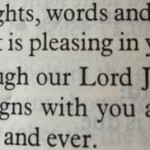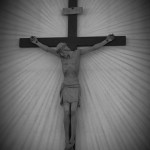Heather Wilhelm details how a church (non-tax-paying) is being taken to make room for tax revenues!
Since the Supreme Court’s controversial Kelo decision last summer, eminent domain has entered a new frontier. It’s not just grandma’s house we have to worry about. Now it’s God’s house, too. “I guess saving souls isn’t as important,” says Reverend Gildon, his voice wry, “as raking in money for politicians to spend.” The town of Sand Springs, Oklahoma, has plans to take Centennial Baptist — along with two other churches, several businesses, dozens of small homes, and a school — and replace them with a new “super center,” rumored to include a Home Depot. It’s the kind of stuff that makes tax collectors salivate. It’s also the kind of project that brakes for no one, especially post-Kelo. “I had no idea this could happen in America,” says Reverend Gildon, after spending Monday morning marching in the Sand Springs Martin Luther King Day parade.
A heavily-taxed, “social welfare” minded government is always going to be a more utilitarian, more “results oriented” sort of government – one that will undervalue those things which are not tangibly “useful” to either the lawmakers or to their perceptions of what “society” needs.
In such a world, what cannot be measured and exploited is perceived to be of dubious or narrow value. To utilitarians, a church that pays no taxes (even if it feeds and clothes and helps find employment for locals having some hard luck) is essentially a waste of good commercial space. A monastery, whether Buddhist or Christian, is nothing more than a greedy and exclusive landgrab that has no “public benefit.”
To such a mindset, anyway, it has no public benefit.
Dame Laurentia McClachlen of Stanbrook Abbey, Sussex once said “a monastery is like a powerhouse; you do not lock up a powerhouse to restrain the power, but to keep anyone from coming in and gumming up the works. A monastery is a powerhouse of prayer, meant to give light to the whole world.”
It goes without saying that I believe this. I believe that a house of prayer – particularly a house of contemplation, but really any church – brings nothing but good to its surrounding communities, no matter if those communities do not ascribe to the religion. I would be as delighted to find a group of Buddhist monks moving into a small local (and fading) monastery as the I would be to see more nuns show up. If a church or a prayer community is faithful, true to its charism, then it cannot help but be a boon to a community both materially (if it includes an outreach program) and spiritually…and in unexpected ways.
I cannot cite documentation – the things I have read have all been anecdotal – but we Catholics know of many instances wherein a parish, deciding to bring perpetual adoration (which is very contemplative) into the mix has seen enormous change within its neighborhoods, not merely in terms of church attendance (and vocations) but in terms of the overall economic and social health of the area. It’s one of those things that can be viewed as completely subjective – some could conclude that a community turned around for other, tangible reasons (the economic health of the nation improved, a new business opened, people planted flowers, whatever) and yet, time and again, we have seen areas that have re-dedicated themselves to prayer be completely turned around.
Prayer is a force, and it has power.
There are things seen and unseen. Things corporeal and things spiritual. Things natural and supernatural. A society bent on utilitarianism serves only the seen, the corporeal, the natural, and neglects the things unseen – at great risk.
I know an atheist or a bureaucrat might not understand or accept this, but what is truly important and valuable to people, and to communities – and maybe even to a nation – often cannot be measured in flow charts and columns; it cannot be harnessed and tied down and made to conform to black and red accountant columns. It is not accountable. But we have seen the fruits of those socialistic societies which forget the supernatural. They flounder and inevitably fail. In Europe they are failing even as I write this.
A utilitarian society is one in which small, crabbed, self-important bureaucrats have won the day – wherein they have managed to dot every i and cross every t, and blot each entry before locking those valuable ledgers away. A utilitarian society may even have trains that run on time. But it is a society that is essentially empty because balanced books, as satisfying to the eye as they might be, do not bring love or goodness or generosity or philosophy or beauty to the world. And a soul (or a country) enslaved to their upkeep dies a dreary death – alone, unmourned and unsung.
Bizzyblog has more thoughts on the story,and writes:
“…if you attend church, ask yourself: Is your church on a busy street, or near a retail center, or simply not liked by your community’s powers that be? Post-Kelo, as predicted by Don Sensing and many others when the decision came down, it looks like your church could be vulnerable to a taking at any time.”
He also links to a few bloggers who predicted that under Kelo the churches would be at risk. The Larsonian observes that churches without outreach may be particularly susceptible:
When a church isn’t safe in Oklahoma, it isn’t safe anywhere.
Here’s another graph from the story about which I will comment:
It makes sense on one level. Churches don’t generate any tax revenue for the government to spend. They don’t “stimulate” the economy. They often, much to their peril, occupy prime, envied real estate. With the supercharged powers granted by Kelo, be very, very afraid.
Once a church occupied a place on the city square, true enough. Churches were–and in some places I’ve been they still are–social centers of communities. As for their tax exempt status, the charitible works of a church were once considered a good in themselves. Not so much anymore, it would appear. (Note to self: How visible are the works of local congregations these days? Are inward-facing congregations going to be most at-risk?)
Molten Thoughts is also following this.
More thoughts: I’ve received a few emails from people suggesting that this is a small issue, given that the church in OK had “only 50 members.”
Here in NY, there are lots of churches – probably at this point, I would say the majority of churches, Catholic and non, have what would be considered “small” member numbers. NYC residents are not notorious church-goers. Some churches, street-bound, see very little traffic during the week. Some churches, like the recently (and beautifully) restored St. John’s which is across the street from Penn Station, get lots of transient and commuter visitors throughout the day, both for worship and for confession (the Capuchin friars there are great confessors), and they feed a lot of people a few days a week, but in terms of sheer numbers, the parish would seem unimpressive. And given its primo location, it would not be at all surprising to see an attempt to take it over for revenue-increasing commercial use. Don’t suppose that only a “small” church is at risk, in this situation. And don’t suppose only certain denominations are at risk, or only Christian (but not Jewish or Muslim or Buddhist) houses of prayer are at risk. They’re all at risk. KELO needs to be defanged. Legislators need to know how you feel about it.
WELCOME: Polipundit and Amy Welborn readers! While you’re here, please look around. Today we’re also talking about Pope Benedict’s new encyclical on love (and sex) and how the world might respond to it, and Ohio SecState Ken Blackwell. We’re also remembering a fallen soldier.
UPDATED: Slightly off-topic, but interesting still (particularly since I just mentioned Stanbrook Abbey above) is this story about the sale of Stanbrook.











